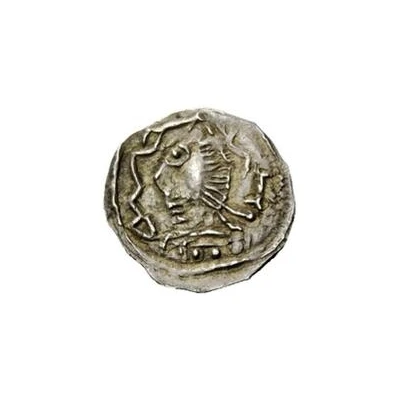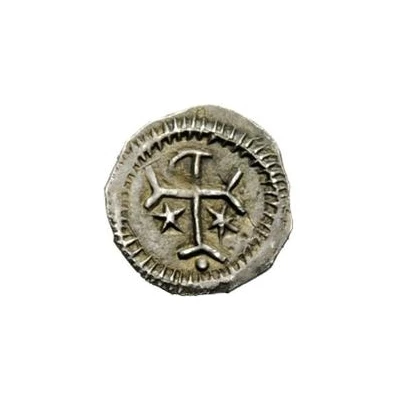


© Numismatica Ars Classica NAC AG
½ Siliqua In the name of Justinian I; Pannonia?
550 year| Silver | 0.43 g | 12 mm |
| Issuer | Transalpine Area (Lombard Kingdom) |
|---|---|
| Type | Standard circulation coin |
| Year | 550 |
| Value | ½ Siliqua = 1⁄16 Tremissis |
| Currency | Tremissis (Mid-6th century) |
| Composition | Silver |
| Weight | 0.43 g |
| Diameter | 12 mm |
| Shape | Round (irregular) |
| Technique | Hammered |
| Demonetized | Yes |
| Updated | 2024-10-10 |
| Numista | N#144929 |
|---|---|
| Rarity index | 100% |
Reverse
Backwards staurogram with star to the left and to the right.
Edge
Plain
Comment
This coin is quite difficult to attribute.Firstly, it is unknown whether this piece is a 1/2 Siliqua or a 1/4 Siliqua. The specific date is also unknown, and while the minting place is sometimes listed as being Frisia, that is not confirmed.
In 1997, this coin was sold in the auction: "Giessener Münzhandlung 81, 994." More information is needed on that auction.
In 2007, this coin was sold in the auction: "Künker 121, De Wit, 151." Künker listed the coin under Franks - Frisia, stating the most likely source of origin was the Lower Rhine territory of the Franks, which would date it back to 580. However, they go on to say that silver coins did not yet exist in the Frank relm at that time, and the reverse pattern more so reflects coins from the Byzantium Empire and the places closest to it.
In 2017, this coin was sold in the auction: "Numismatica Ars Classica NAC AG 93, lot 1260." That auction house lists this coin under the Transalpine Area of the Lombards due to its similarity with the 1 Tremissis coin from that area. The auction house still lists this coin as being minted in Frisia, and gives the date-range 568 to 690. Even so, if this coin is also from the Transalpine Area, it would have likely been minted around the same time (although that is just an assumption).
Interesting fact
One interesting fact about this coin is that it was minted during the reign of Justinian I, who was the Byzantine Emperor from 527 to 565 AD. This coin was part of a series of coins minted during his reign that were designed to standardize the currency and promote trade throughout the empire. The ½ Siliqua denomination was a new introduction during Justinian's reign and was equivalent to half of a standard Siliqua coin.